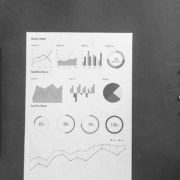Operational Leverage: FP&A’s Hidden Power Source
Operational Leverage Liberation:
How FP&A Measures and Monetises Hidden Cost Elasticity
When revenue swings, CFOs panic.
When costs don’t move with it, FP&A panics louder.
We’ve all seen it—sales dip 10 percent, but expenses refuse to follow.
Margins implode not because revenue fell, but because costs stayed still.
That’s operational leverage in action—and mis-action.
Most finance teams can quote the textbook definition.
Few can measure how elastic their cost base truly is.
The result?
Companies think they’re flexible until reality proves otherwise.
The Cost-Elasticity Mirage
Budgets divide costs into neat categories—fixed and variable.
Reality doesn’t.
Some “fixed” costs bend under stress: vendor renewals, deferred maintenance, contract renegotiations.
Some “variable” costs behave fixed: long-term headcount, multi-year SaaS deals, unavoidable logistics.
This hidden elasticity—the unmodelled stretch and stickiness of spend—is the missing metric in most FP&A systems.
It’s where profit resilience either lives or dies.
Why FP&A Rarely Models It
Because it’s messy.
And messy doesn’t fit in templates.
Operational data sits in HR, procurement, and ops systems.
Finance sees invoices, not flex points.
So when leadership asks, “How fast can we cut 10 percent of costs?”
the answer is usually a shrug dressed as a slide deck.
That’s not incompetence—it’s invisibility.
Measuring the Elasticity Curve
Start small.
You don’t need a data lake—just discipline.
Step 1: Map behaviour, not category.
Ask: how does each cost line react to a 20 percent volume drop? A 10 percent price rise? Time it.
Step 2: Build cost-response curves.
Replace static “fixed vs variable” with elasticity ranges. Each cost has a lag and limit before it moves.
Step 3: Embed in your forecasting engine.
Link elasticity to volume, pricing, or output drivers. Watch costs breathe as business shifts.
Step 4: Use automation to refresh data.
Pull real-time spend signals—contract renewals, overtime, supplier rates—straight into your model.
Step 5: Translate through analytics.
Show leadership the “bend curve”: how quickly each cost bucket flexes versus revenue change.
Once they see lag time, they see risk differently.
What Happens When You Model It
Two things:
- FP&A stops chasing variance—it predicts it.
- Strategy becomes grounded in physics, not hope.
A tech company I advised discovered its cloud costs were 85 percent fixed in practice.
By restructuring vendor tiers, it made 30 percent variable.
That single shift widened its downturn runway by nine months.
Elasticity is profit’s shock absorber.
Resistance and Reward
Expect pushback.
Ops teams hate finance redefining their cost universe.
Procurement fears exposure.
But once leadership sees a quantified elasticity map—“here’s what flexes, what sticks, and what it costs to move”—the conversation matures.
Budgeting becomes less about reduction, more about reaction time.
Operational leverage stops being a ratio.
It becomes a readiness metric.
FP&A’s New Mandate
The modern finance function isn’t just about reporting—it’s about structural insight.
FP&A must answer one question that accounting can’t:
How fast can this company adapt when the world doesn’t?
That’s the essence of operational leverage liberation.
It’s not cost-cutting. It’s optionality.
Key Takeaway
Profit isn’t built on volume—it’s built on flexibility.
And FP&A is the only team positioned to measure how much the business can bend before it breaks.
At The Schlott Company, we help teams transform static cost structures into dynamic, data-driven elasticity models.
Because in a volatile market, the strongest companies aren’t the biggest—they’re the ones that flex first.









